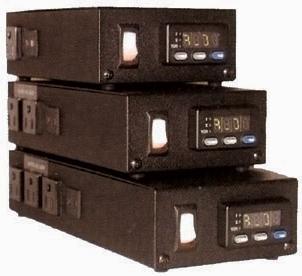To work any more or less complexelectronics, usually need a lot of parts. When there are a lot of them, they can “unite”, say, in integrated circuits. What are they? How are they classified? How are they made, and what signals do they transmit?
What are logical integrated circuits (ICs)?

Design levels

- Logic level (inverters, AND-NOT, OR-NOT and the like).
- System and circuitry (triggers, encoders, ALUs, comparators, etc. are being worked out) ;.
- Electrical (capacitors, transistors, resistors and similar devices).
- Topological level - photomasks for production.
- Physical - as implemented by a single transistor (or small group) on a chip.
- Software - create instructions for microcontrollers, microprocessors and FPGAs. A behavioral model is developed using a vertical scheme.
Classification
Speaking about how to distinguish between integrated circuits, it is impossible to choose only one parameter of the type of complexity of the equipment about which we are talking. Therefore, in the framework of the article, as many as three were selected.
Degree of integration

- Small integrated circuit. Contains less than one hundred items.
- Average integrated circuit. The number of elements varies in the range of hundred / thousand.
- Large integrated circuit. Contains from one thousand to 10 000 elements.
- Ultra-large integrated circuit. They have over ten thousand items.
As a rule, a large integrated circuit is often used for home appliances. Previously used other categories:
- Ultra-large integrated circuit. It included those samples that could boast a number of elements in the range from 1 million to 1 billion.
- Gigabyte integrated circuit. These included samples, the number of elements of which exceeded 1 billion elements.
But at the moment they do not apply.And all the samples that were previously attributed to UBIS and GBIS are now passing as VLSI. In general, this has significantly saved on the number of groups, since the latter two types are usually used specifically in large research centers where computer systems operate, whose power is measured in tens and hundreds of terabytes.
Manufacturing technology

1. Semiconductor.In them, all elements and compounds are made on the same semiconductor chip. Semiconductor integrated circuits use materials such as silicon, germanium, gallium arsenide, and hafnium oxide.
2. Film. All elements and connections are made as films:
- Thick film.
- Thin film.
3. Hybrid.Has unpackaged diodes, transistors or other electronic active components. Passive (such as resistors, inductors, capacitors) are placed on a common ceramic substrate. All of them fit in one sealed enclosure.
4. Mixed. There is not only a semiconductor crystal, but also thin-film (or thick-film) passive elements that are placed on its surface.
Type of signal being processed

- Analog. Here, the input and output signals vary according to the law of a continuous function. They can take values in the range from negative to positive supply voltage.
- Цифровые.Here, any input or output signal can have two values: logical one or zero. Each of them has its own predetermined voltage level. So, TTL-type microcircuits range 0-0.4V to zero, and 2.4-5V to one. There may be other divisions, it all depends on the specific sample.
- Analog-digital. Combine the advantages and features of the previous samples. For example, they can be signal amplifiers and analog-to-digital converters.
Legal features
What is said about integrated circuits inlegislation? In our country, provided legal protection of topologies of integrated circuits. By it they mean the geometrically-spatial arrangement of a certain set of concrete elements and connections between them fixed on a certain material carrier (according to article 1448 of the Civil Code of the Russian Federation). The author of the topology has the following intellectual rights to his invention:
- Author's.
- Exclusive right.
In addition, the author of the topology may belong toother preferences, including the possibility of obtaining remuneration for its use. The exclusive right is valid for ten years. During this time, the inventor, or the person to whom this status was assigned, can register the topology with the relevant service of intellectual property and patents.
Conclusion













